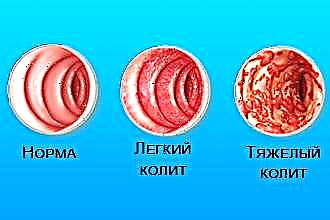Features of right ventricular infarction: anatomy and physiology of the process
The right ventricle (RV) is a thin-walled chamber of the heart that pushes oxygen-depleted blood through the pulmonary arteries into the lungs. As a result, the pancreas works under conditions of low pressure and hypoxia. It is supplied with blood both in systole and diastole - both with tension and with relaxation of the heart muscle. These factors make the right ventricle more resistant to myocardial infarction (MI) than the left. However, it is not immune to the negative effects of atherosclerosis.
Isolated necrosis of cardiac muscle cells occurs when the terminal (terminal) branches of the right coronary artery are blocked by blood clots or critically narrowed.
Large-focal myocardial infarction of the left ventricle can go to the right, while the entire posterior wall of the heart is affected. This is a common cause of gastralgic myocardial infarction with characteristic abdominal pain, vomiting and nausea.
When the myocardial power is disturbed, the working conditions of the conducting system change (it sends electrical impulses that make the heart contract). This inevitably leads to the development of arrhythmias with especially dangerous forms - atrial fibrillation, sinus bradycardia and atrioventricular block.
Differences in clinic and diagnosis from other forms
Right ventricular infarction occurs in about 30% of patients with inferoposterior (diaphragmatic) left ventricular infarction. Isolated necrosis of the right is much less common, in only 10% of cases.
Due to tissue death, the contractility of the pancreas decreases and the symptoms of acute heart failure increase. The main feature of right ventricular infarction is the absence of blood stagnation, accumulation of fluid in the pulmonary circulation (lungs), as well as low pressure.
Right ventricular infarction on ECG looks like the ST segment elevation in the inferior chest leads (V3R and V4R) above the baseline. It is evaluated in all patients with acute myocardial infarction and angina pectoris.
Also in diagnostics, the measurement of the content of cardiac enzymes and myocardial necrosis factors in the blood serum remains the gold standard.
The main clinical signs of right ventricular infarction:
- Swelling of the jugular (cervical) veins on inspiration.
- Low blood pressure, which is manifested by weakness, dizziness, nausea.
- Enlargement of the liver. It stretches due to the increased volume of blood passing through it. Pain occurs, such as when running or strenuous exercise.
- Accumulation of fluid in the abdominal cavity.
- Swelling of the lower limbs that rises up from the ankles to the abdomen. As myocardial infarction progresses, it becomes whole body edema.
- Interruptions in the work of the heart with damage to the conducting system. Symptoms range from decreased heart rate and dizziness to loss of consciousness due to atrial fibrillation.
- Pain in the region of the heart with irradiation, characteristic of a heart attack in general, also occurs when the right ventricle is affected. However, in older people, diabetics may not have symptoms at all. In these cases, cicatricial changes are often found on control cardiography.
Forecast and nuances of rehabilitation
The patient's health and life depend on the doctor's ability to recognize symptoms and pathological changes on the electrocardiogram, diagnose and prescribe the correct treatment.
It is important to know that in case of right ventricular infarction, it is strictly forbidden to take nitrates (nitroglycerin) on your own. When prescribing them, careful observation of the patient in a hospital setting is required. Morphine is also not suitable for pain relief and is used only when urgently needed, since it dilates blood vessels and leads to a decrease in blood pressure and impaired hemodynamics.
The main task of therapy is a moderate decrease in the load on the right ventricle, control of the frequency and rhythm of heart contractions, regulation of low blood pressure by intravenous drip of saline and other drugs that restore the missing blood volume (Reopolyglucin, Reosorbilact, Styrofundin).
The treatment process is monitored using EchoCG and ECG. It is important for the patient to remain calm, since unnecessary movements, even such as moving from a horizontal position to a vertical one when getting out of bed, strain the heart and can lead to an aggravation of the condition.
Another nuance of recovery after a heart attack is the preference for drug treatment, since invasive interventions and research can destabilize the work of the cardiovascular system. With the timely appointment of thrombolytics, surgery may not be necessary.
The consequence of transmural right ventricular infarction is often arrhythmia, which must be controlled during the recovery period, regular electrocardiography and antiarrhythmic drugs should be used.
Conclusions
The clinic of myocardial infarction of the right ventricle can be characterized by atypical symptoms, therefore, requires careful attention from the doctor and the patient himself. Acute and post-infarction periods should be most gentle, given the tendency to destabilize blood pressure.
Recommendations for the post-infarction period include constant electrocardiographic monitoring, lifestyle adjustments and taking medications that regulate the heart rhythm.



